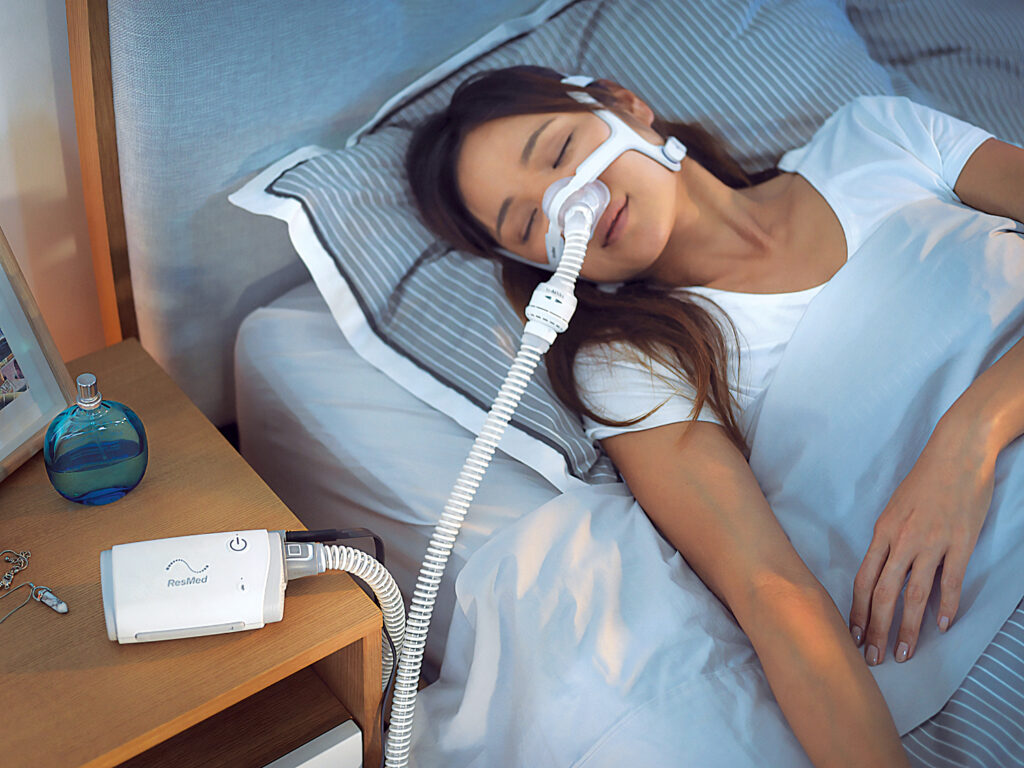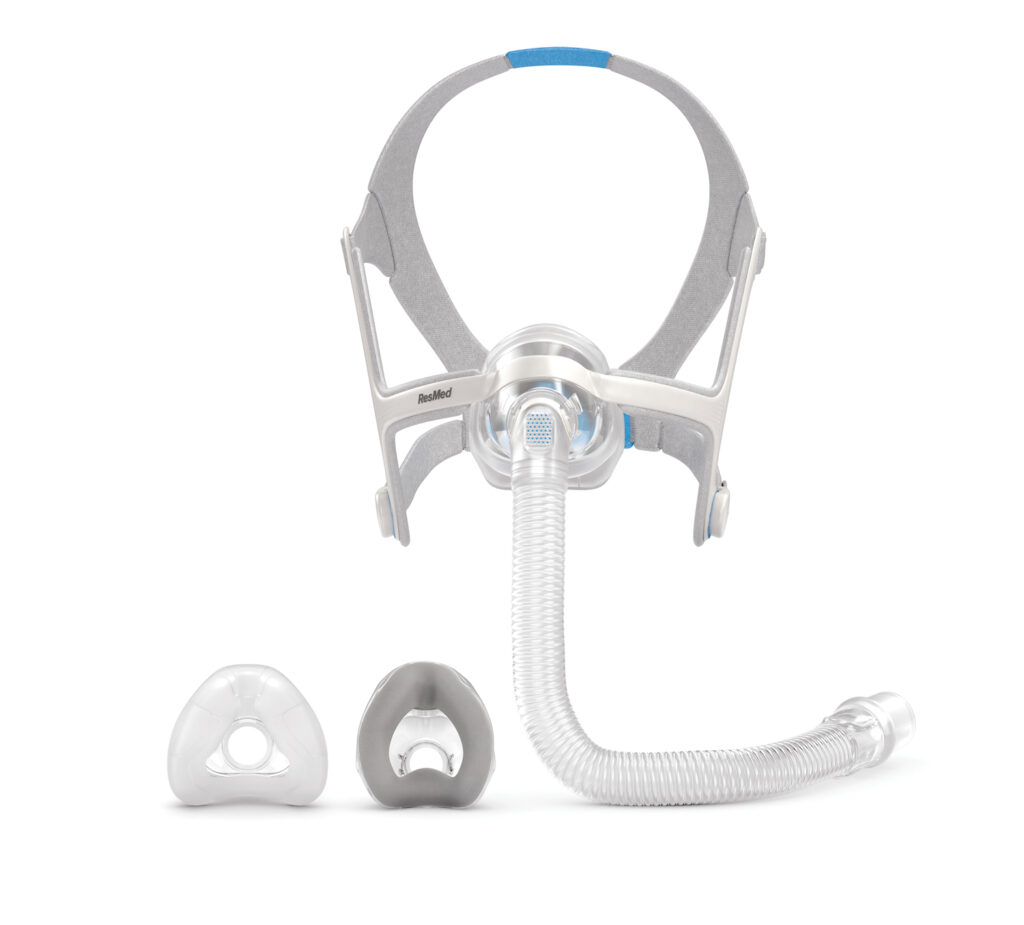
Approximately 39 million U.S. adults have obstructive sleep apnea (OSA) and nearly 936 million adults around the world are estimated to have mild to severe OSA. When left untreated, sleep apnea can result in severe health complications. And while innovative continuous positive airway pressure (CPAP) machines can help offset the effects of sleep apnea, the cumbersome technology can result in sleep deprivation. The good news? Textile manufacturers across the globe are developing textiles that can help diagnose, monitor and treat sleep apnea.
Making inroads
Simon Annaheim, Ph.D., scientific group leader at Biomemtex Lab at Empa in Zurich, Switzerland, is an expert in body-monitoring thermoregulation clothing comfort and protection. As part of the company’s sleep apnea treatment efforts, Empa has developed a fabric with specific electrical properties to monitor vital signs such as embroidered electrodes for the acquisition of electrocardiogram signals and flexible conductive fabrics for the monitoring of thorax excursions, which are the movements of
the diaphragm during breathing.
“This allows for a continuous monitoring of vital signs in a home setting, which provides complementary information about the health status of patients for screening and diagnosis purposes as well as patient follow-up to evaluate effectivity of treatments,” Annaheim says.
The Empa team has been developing this fabric for approximately 10 years and faced a myriad of challenges along the way. As Annaheim explains, the biggest challenges included the development of a methodology for a robust and reliable coating of the fibers.
“We faced challenges in the development of an embroidery process to obtain well-controlled electrical properties of the electrode,” Annaheim says. “And it was challenging in the development of an algorithm for filtering of signals and extraction of relevant information for sleep apnea monitoring.”
Where comfort and technology meet
Skye Short, manager, Textile Centre of Excellence, Sleep and Respiratory Care Product Development at ResMed in Bella Vista, Australia, understands the complexities involved in developing textiles that help manage sleep apnea. As Short explains, ResMed prioritizes the safety, performance and comfort in the company’s product designs, especially in its range of sleep masks.
“We predominantly use synthetic fibers, like nylon and polyester; foams; and composites to meet these requirements. It’s important that we select materials that are non-irritating to the skin and are safe to use,” Short says.
OSA has been linked to a number of health conditions such as high blood pressure, heart disease, hypertension and type 2 diabetes.
“It may also affect a person’s mental health and personal relationships,” Short says. “As designers and engineers, it’s our goal that our products will help people get the health, rest and energy to enjoy all that life has to offer.”
To offset the challenges those with sleep apnea face, Nanowear in Brooklyn, N.Y., employs cutting-edge nanotechnology sensor textiles that provide both comfort and seamless integration with continuous artificial intelligence-based cardiopulmonary remote diagnostic capabilities that patients can wear at home.
According to Mouli Ramasamy, Ph.D., founding engineer/head of product and internet protocol at Nanowear, garments are meticulously fashioned from a fusion of premium, breathable fabrics, providing comfort and durability.
“What sets our technology apart is the seamless integration of proprietary cloth-based nanosensors and smart electronics into these textiles, facilitating noninvasive vital sign monitoring while preserving the garment’s integrity and functionality,” Ramasamy says.
Nanowear’s product tackles numerous pivotal challenges in modern health care, ranging from the imperative for uninterrupted cardiopulmonary monitoring to the early detection of physiological fluctuations and proactive intervention to avert adverse health incidents.
“Our technology empowers health care providers with real-time, remote monitoring capabilities, facilitating the delivery of personalized care that minimizes hospital readmissions and maximizes patient outcomes,” Ramasamy says.

Sustainability goals
In addition to its goals of enhancing sensor accuracy, expanding compatibility with additional health metrics and optimizing the user’s comfort and experience, Ramasamy says the company is also focusing on a number of sustainability goals. “We are committed to addressing sustainability challenges by exploring eco-friendly materials and manufacturing processes,” he explains.
Sustainability lies at the heart of Nanowear’s mission, and the company is working to minimize its environmental footprint across the entire product life cycle. This encompasses sourcing materials from sustainable and ethical suppliers, streamlining manufacturing processes to curtail waste and energy consumption, and exploring avenues for end-of-life recycling and disposal options for Nanowear’s products.
“Notably, our commitment to sustainability extends to the design of our garments, which boast reusability, unlike many home-based monitoring and diagnostic tools that are often discarded after each use,” Ramasamy says. Nanowear’s products are crafted for durability and longevity, reflecting the company’s dedication to minimizing waste while still improving health care solutions.
ResMed also recognizes the challenge to design sustainability into the product from the start without compromising performance and safety.
“We have sustainability goals for our product design,” Short says. “Our aim is to integrate sustainability into every stage of product development, from material selection, manufacturing processes, packaging and global shipping to serve patients worldwide.”
Furthermore, ResMed is exploring ways to repurpose scrap waste generated from its manufacturing processes into new non-medical goods.
In fact, for new product releases, ResMed has established targets across three horizons.
“In Horizon 1, our focus is on reducing material mass in packaging and product, minimizing industrial waste, and conserving energy and water usage,” Short says. “Moving into Horizon 2, by 2026, our aim is to transition to lower-impact materials for both packaging and product. Finally, by Horizon 3, we envision our products being designed for circularity by 2030.”
Growth projections
Looking ahead in the next decade, Short says the global sleep and respiratory care market is set for significant growth due to rising demand for sleep therapies, driven by sleep wellness technologies from big consumer tech companies.
“We’re committed to treating the whole person, investing in innovative digital health technology like Compliance Coach, which helps home medical equipment providers to improve patient outcomes through a blend of digital and personal outreach,” Short says. “Additionally, we’re integrating AI-driven sleep concierges to further enhance the level of care provided to our patients.”
Ramasamy agrees that the wearable health technology market is poised for unprecedented expansion in the upcoming decade, fueled by a soaring demand for remote patient monitoring, tailored health care solutions, and groundbreaking advancements in sensor technology and data analytics.
“As the health care landscape pivots towards proactive and personalized care delivery, the demand for wearable health technologies continues its upward trajectory,” Ramasamy says.
Empa also is focused on the implementation of the product, including various challenges requiring an interdisciplinary team (textile sensor production, development of medical monitoring solutions, financing the concept for a medical monitoring solution, connection of the product to the medical information technology infrastructure, etc.).
“Sleep monitoring in a home setting will become a growing market in the future to complement services currently provided by medical care providers,” Annaheim says. “Such solutions should contribute to more accurate diagnosis of sleep-related breathing disorders and more cost-effective therapies.”
Maura Keller is a freelance writer based in Plymouth, Minn.
 TEXTILES.ORG
TEXTILES.ORG


